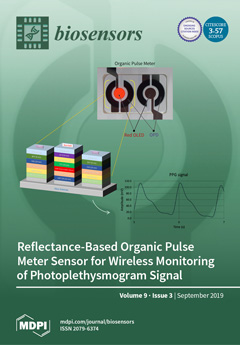The electrochemical reactor microbial sensor with the Clark oxygen electrode as the transducer was used for investigation of the competition between 3-chlorobenzoate (3-CBA) and its analogues, 2- and 4-chlorobenzoate (2-CBA and 4-CBA), for 3-chlorobenzoate-1,2-dioxygenase (3-CBDO) of
Rhodococcus opacus 1CP cells. The change in
[...] Read more.
The electrochemical reactor microbial sensor with the Clark oxygen electrode as the transducer was used for investigation of the competition between 3-chlorobenzoate (3-CBA) and its analogues, 2- and 4-chlorobenzoate (2-CBA and 4-CBA), for 3-chlorobenzoate-1,2-dioxygenase (3-CBDO) of
Rhodococcus opacus 1CP cells. The change in respiration of freshly harvested
R. opacus 1CP cells in response to 3-CBA served as an indicator of 3-CBDO activity. The results obtained confirmed inducibility of 3-CBDO. Sigmoidal dependency of the rate of the enzymatic reaction on the concentration of 3-CBA was obtained and positive kinetic cooperativity by a substrate was shown for 3-CBDO. The Hill concentration constant,
S0.5, and the constant of catalytic activity,
Vmax, were determined. Inhibition of the rate of enzymatic reaction by excess substrate, 3-CBA, was observed. Associative (competitive inhibition according to classic classification) and transient types of the 3-CBA-1,2-DO inhibition by 2-CBA and 4-CBA, respectively, were found. The kinetic parameters such as
S0.5i and
Vmaxi were also estimated for 2-CBA and 4-CBA. The disappearance of the S-shape of the curve of the
V versus
S dependence for 3-CBDO in the presence of 4-CBA was assumed to imply that 4-chlorobenzoate had no capability to be catalytically transformed by 3-chlorobenzoate-1,2-dioxygenase of
Rhodococcus opacus 1CP cells.
Full article






